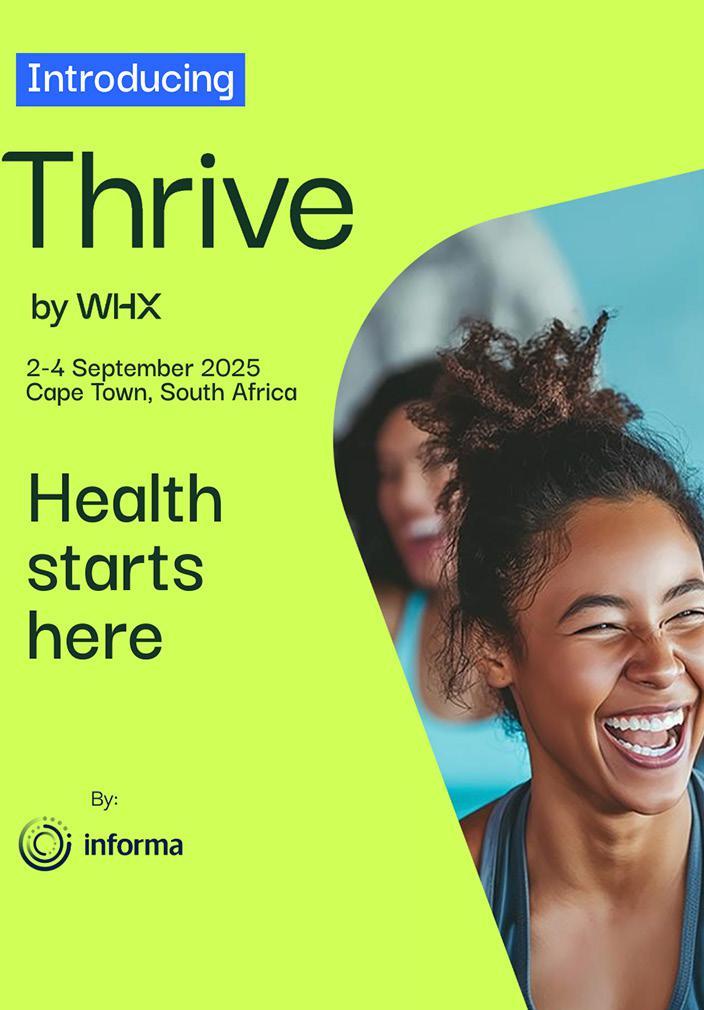












Jehad Kasu
It only recently dawned on me that Your Wellness Matters (YWM) newspaper was established in July 2015 – Wow! How time ies!
That means YWM is o cially 10 years old since its rst publication featuring the Western Cape Minister of Health & Wellness, Professor Nomafrench Mbombu on the front page, and this realisation mobilised its revival after a brief hiatus.
It’s appearing fortuitous then that the birth month of YWM is also home to an international awareness week that since nearly 2 years ago has become very dear to me. What am I talking about? Allergies.
29 June – 5 July 2025 was World Allergy Awareness Week, and on the account of this auspicious occasion of YWM’s 10th Anniversary, it’s an honour to share something personal with you all in it.
My 2nd born son who will be 2 years old on 21 July was born with a mostly non-life-threatening genetic condition called G6PD de ciency. G6PD de ciency is when the body is missing or doesn’t have enough of an enzyme called G6PD (glucose-6-phosphate dehydrogenase). This enzyme helps red blood cells work correctly. A lack of this enzyme can cause a breakdown of red blood cells (hemolytic anemia). So instead of circulating for 90 days, the red blood cells are destroyed earlier. This results in a low number of red blood cells called anemia. He was in hospital for 2 weeks from birth
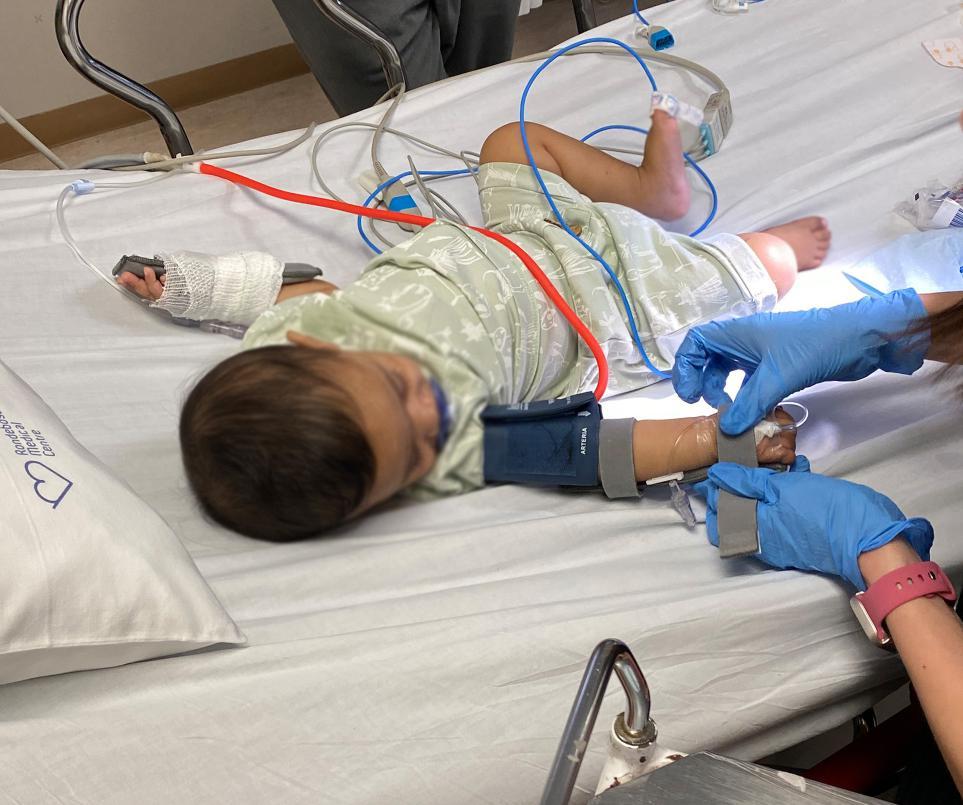
with extremely high levels of jaundice caused by his G6PD de ciency.
Another consequence of G6PD de ciency is that he’s allergic to a long list of medication that includes paracetamol, and some foods such as fava beans and blueberries. But if he ingests any of this in a low amount it won’t harm or kill him, so we nd it easier to manage this than what’s discussed next.
In addition to G6PD de ciency he also
has severe (lethal) egg and nut allergies, along with wheat and gluten too. Allergies that many misunderstand and sometimes consider as harmless as a pollen allergy resulting in hay fever.
We discovered his allergy to egg one Friday morning in February 2024, when he was only 6 months old and introducing him to solids and allergen food groups. I prepared myself some
Continued on page 3
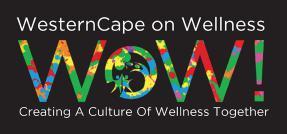


scrambled eggs and toast for breakfast and set aside some egg for my son, who was eagerly awaiting something to eat.
I gave him less than a teaspoon of egg and he seemed to enjoy it! Being aware that we were feeding him an allergen we gave it a few minutes to see if a rash or any other physical allergic reactions presents – honestly not expecting anything to happen.
Within minutes, a rash appeared around his mouth and he started coughing a lot. His eyes started tearing. Then he showed signs of struggling to breath – followed by projectile vomiting, something he didn’t do before.
This was all in the space of less than 10 minutes!
Fortunately we live very close to a hospital and have access to private medical care – something most South Africans don’t, and is the fundamental reason why we created YWM 10 years ago – to bring preventative wellness and healthcare information closer to the people who need it most.
I rushed through every tra c light and intersection with my bright headlights on, hooter blaring, and one arm waving out of the window at oncoming tra c to stop.
By the time my son was laid onto the bed in the emergency room his eyes were rolled deep back into his head, was non-responsive, and nearly as limp as death. My wife was in a dazed panic and soaked in tears beside me. I was trying to calm her. But the reality is it was the most traumatic life event we’ve ever experienced.
We were overcome with feelings of
helplessness and a sense grave imminent loss. Fortunately, again, his pediatrician who was back then based at the hospital we rushed him to, was at work and she was paged to the ER and arrived promptly. She knew his history and acted quickly to stabalise him and also arrest our darkest fear.
Not long after administering medication for acute anaphylaxis, he came to, still weak and disoriented – but he was alive! And he was going to be okay.
We will never forget that day. These allergies he has impacts us all - what we eat, where we go. For the next 1.5 years my wife was reluctant to attend social gatherings for fear of people unknowingly feeding him foods or sweets with nuts or egg in it.
Our house is now a no-nuts house. With close family members we will even ask them not to have any nuts as a snack. One might just fall onto the oor, and he picks it up and eats it. Or another child or adult might innocently o er it to him.
If you want a Lunchbar or a peanut butter sandwich – eat it outside. In fact, I don’t know when last we had peanut butter in our house lol!
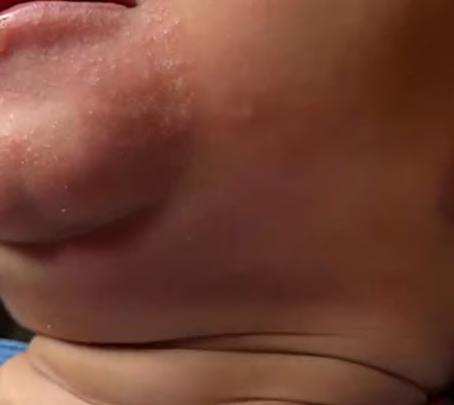
All jokes aside, because of a lack of understanding and education it’s easy to misunderstand and even dismiss the severe consequences some allergies can have. It’s exhausting for the parents to constantly manage this when outside our house which is his only safe environment.
At least now an EPIPEN buys us some time in case of an emergency that we hope is never repeated.
I considered what the options would be for a mom or parent in a township who faced the same fatal, but preventable risk we did – what options do they have? Ambulances won’t come out quickly enough, or at all as some (most) township communities are deemed red (unsafe) zones and will not enter without a police escort that adds even more time to them getting there.
So I’m hopeful the little bit I can do by spreading awareness and information through this free resource helps someone.
I encourage you to read the next article that speaks more about World Allergy Awareness Week, attentively – it might help you save a life!

make
wellness and lifestyle decisions.
Contributors
• Dream Hotels and Resorts
• Heart and Stroke Foundation
• Tracey Catania
• Merilynn Steenkamp
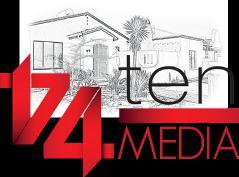

World Allergy Week, an annual campaign initiated by the World Allergy Organization (WAO), runs this year from 29 June to 5 July, with a critical focus on anaphylaxis—a severe, potentially life-threatening allergic reaction that requires immediate medical attention. In South Africa, The Allergy Foundation of South Africa (AFSA), in collaboration with the Allergy Society of South Africa (ALLSA), is spearheading local awareness e orts.
Anaphylaxis is a medical emergency that typically develops rapidly after exposure to allergens such as certain foods, insect venom, medications, or latex. In South Africa, bee venom is the most common cause, but food-induced anaphylaxis—particularly from eggs, peanuts, tree nuts, sh, shell sh, and milk—is increasingly prevalent.
Recognising the Symptoms of Anaphylaxis
Symptoms typically begin within minutes of exposure and may start as mild allergy signs such as hives, redness, or itching, followed by more serious developments. These include di culty breathing or swallowing, swelling of the tongue or throat, abdominal pain, vomiting, dizziness, low blood pressure, and loss of consciousness.
Professor Mike Levin, CEO of AFSA and Head of Allergology at Red Cross Children’s Hospital, explains that the real danger with anaphylaxis is how quickly symptoms can escalate. “Anaphylaxis doesn’t give you much time. If it’s not treated within minutes, the consequences can be devastating. We need the public to understand that this is not just a severe allergy—this is a life-threatening emergency,” says Prof. Levin.
He adds that awareness must go beyond the patient and family. “Teachers, caregivers, coaches, and community members need to know how to recognise the signs of anaphylaxis and what to do. That’s why education and access to emergency medication are critical parts of this year’s campaign.”
Emergency Treatment: Adrenaline Saves Lives
Immediate administration of intramuscular adrenaline (epinephrine) is the cornerstone

Image credit: vanessa-loring
of emergency anaphylaxis treatment. Individuals at risk are strongly advised to carry an adrenaline auto-injector at all times and to be trained in its use.
Dr Candice Royal, Paediatric Allergist and medical advisor to AFSA explains: “Adrenaline should be administered as soon as anaphylaxis is suspected. It can be lifesaving. A second dose may be needed if there’s no improvement within 5 minutes, but the most important step is calling emergency medical services and heading to the nearest hospital right away.”
Avoiding known allergens is the most e ective prevention method. Accurate diagnosis through allergy testing helps identify triggers, especially in patients with unexplained or idiopathic reactions.
Dr Pieter de Waal, allergist and ALLSA member, adds:
“Education is key to prevention. We urge patients, caregivers, schools, and healthcare professionals to be allergy-aware—understanding both the causes and the practical steps needed to manage this risk can truly save lives.”
In support of this year’s campaign, AFSA continues to distribute free educational materials to schools, clinics and healthcare professionals, including its How to Use an Auto-Injector poster. Requests for printed versions or downloadable copies can be made via the AFSA website. The organisation also runs an online Food Allergy support group. Patients with serious food allergies can join the group by emailing info@allergyfoundation.co.za.
To learn more about anaphylaxis and what steps to take in an emergency , AFSA will be sharing anaphylaxis awareness messages via social media on Tik Tok @dr.randallortel , @SAallergy on Instagram, and their Facebook page. AFSA hopes to stop preventable deaths from severe allergic reactions by spreading knowledge and resources across communities.
For expert resources and support, visit www.allergyfoundation.co.za or explore more at the World Allergy Organization. https://www.worldallergyweek.org/
For more Anaphylaxis awareness videos and radio interviews
https://www.allergyfoundation.co.za/allergy-information/allergic-diseases/anaphylaxis/ Supplied Content
South African Awareness Campaigns and

World MS Day 2025 | Focus: Real Life, Real Impact
Multiple sclerosis (MS) a ects over 2.8 million people worldwide — and around 74% of those diagnosed are women. Yet the real-life implications of MS often go unheard. From symptoms that are hard to explain, to unavoidable physical limitations that develop over time, MS can become an invisible storm in anyone’s daily world.
In the spirit of World MS Day, understanding this complex condition is the rst, and most important step – for those at risk, people with MS and their families. Let’s deepen the conversation.
Here are six vital things everyone should know:
The early symptoms of MS can be invisible — but they’re real
Many people with MS rst experience things like visual changes, numbness and sudden fatigue — symptoms that are often misunderstood or dismissed.
Muscle weakness or tingling in the limbs, clumsiness and balance problems, dizziness and even bladder control issues may make the disease hard to pinpoint without a diagnosis. In many cases, symptoms are simply brushed o and attributed to factors like stress, fatigue or other everyday challenges.
It’s vital to remember, however, that while
these early signs may be subtle, they could signal real neurological changes. Early evaluation can help guide better treatment and care. A quick visit to a General Practitioner or clinic can make a life-changing di erence. “I recently started losing my balance and falling.” – Patient story, MyMSTeam
MS a ects women more often — and often during the busiest years of life.
Most diagnoses happen between 20 and 50 — years typically for career growth, relationships and building families. For many, this makes the diagnosis feel like a barrier to all the possibilities. But with support, shared stories and evolving treatments, it doesn’t have to be.
While MS has no cure, a growing number of disease-modifying therapies (DMTs) can help slow progression, reduce are-ups and improve long-term quality of life. Working closely with your medical team on a plan that ts your goals is essential. Shared decision-making leads to better outcomes.
5 6 3 2
1 4
Living well with MS is about options — and listening to your body.
There’s no single roadmap for MS. Some people bene t from low-impact movement like yoga. Others prioritise rest, mental health or diet. The key is access to information and the ability to choose what works.
“I am still running my business, hanging with my family and having tons of fun with my tribe. Every May 25th on my ‘diagnosiversary’, I raise a glass and toast to my good health.” – Vickie - Overcoming MS member
Treatment options are evolving — and they matter
MS and pregnancy: It’s possible — and personal
Many women with MS go on to have healthy pregnancies and thriving children. What matters is support — from both medical professionals and the people around them. Every journey is unique, and outdated assumptions no longer serve today’s realities.
No one should face MS alone
MS can feel lonely, but you needn’t face it on your own. From digital platforms like MyMSTeam to patient-driven campaigns and informative resources, more people are speaking out, connecting, and shaping the future of care.
“What I wish I had heard when I was rst diagnosed was that life is going to be di erent now, but not as di erent as you think it is. There’s going to be a new normal, but it’s going to be OK. It really is.” — Jenny, MyMS team member
Let’s change the story — together.
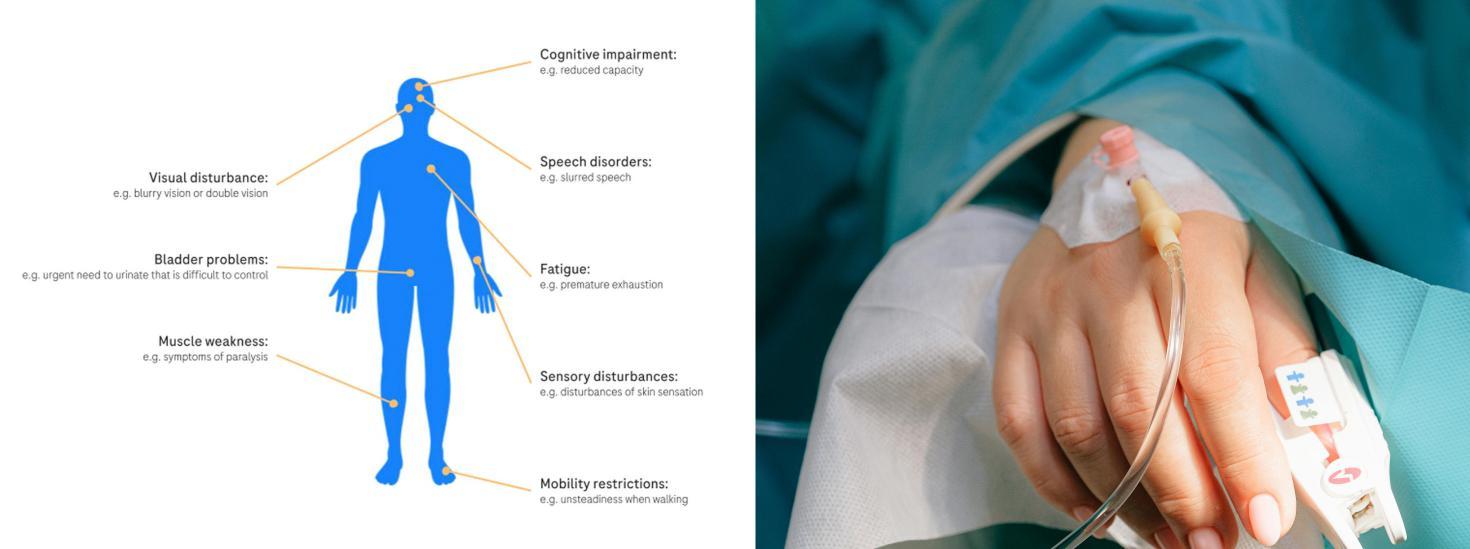

Contributor, Dr Andre Vos
Men still experience a greater share of the burden of disease in South Africa and die at younger ages than women (58 years at birth compared to 64 in women) – often from preventable causes. Dr Andre Vos, Oncologist practicing at Mediclinic Panorama, discusses some of the most prevalent health risks facing men in South Africa, the root causes that deter them from seeking preventative tests and health screenings, and symptoms they should be on the lookout for.
“Health professionals will agree that men are way less likely to go for any form of preventative health intervention compared to women,” says Dr Vos.
The most prevalent health risks facing men
Cardiovascular disease, together with infectious diseases like TB and HIV remains the most pressing health issues facing SA men with HIV prevalencepeaking at 27.1% between the ages of 45 to 49 years. TB is the leading cause of death among men who account for 57% of all recorded TB-related deaths. Cancer, however, is becoming a more prevalent issue as our population ages and more people get access to screening tests.
Dr Vos explains that with cancer, and prostate cancer in particular, one of the most prominent challenges is late diagnosis and the stigma surrounding the disease: “Any disease related to sexual functioning inherently carries some form of stigma. The problem with stigma is that it makes men less likely to talk about their concerns or symptoms and that can lead to misinformation. There’s also a fear that the potential side e ects of prostate cancer treatment might lead to sexual dysfunction.”
Late diagnosis is directly related to men being less likely to seek preventative health care and the reasons behind this are multi-faceted. “With regard to prostate cancer, I think men might feel embarrassed about some of the early symptoms like altered bladder functioning and decreased sexual functioning, which will then delay them seeking help early on,” says Dr Vos.
Erectile dysfunction (ED) and other sexual-related disorders are often untreated due to shame and embarrassment. Basic health education and a willingness to have open
conversations regarding ED – which a ects up to 77% of men worldwide to some degree – will help reduce the stigma.
Testicular cancer is another health concern accounting for 0.5% of malignancies facing men and primarily younger men between the ages of 15 and 40 years. There has been a marked global increase in incidence over the last 50 years and the current worldwide incidence of testicular is between 6 and 11 per 100 000 men.
Healthcare and symptom screening begin at home
In 2022, 13 774 suicides were reported in South Africa and 10 861 of them were men. While suicide and mental health disorders are becoming less taboo, men still often avoid unpacking the issues they face. Dr Vos believes that addressing these challenges and ensuring men have access to the requisite support they need to take charge of their mental health begins at a foundational education level.
“It starts with the way we raise our boys. They who are taught that ‘real men don’t cry’ and that to show any form of weakness is not acceptable while girls are usually encouraged to talk about their feelings. Young boys should be taught basic body self-awareness to be able to distinguish normal from abnormal symptoms.
“As a man ages, changes in urinary or sexual functioning might be a normal part of the aging process, but it would be very di cult for a patient to be able to di erentiate between what can be regarded as normal
and what should be further investigated without the help of a medical professional,” says Dr Vos adding that for prostate cancer, any changes in urinary or sexual functioning should be investigated.
For testicular cancer, any form of testicular swelling or new developing lumps, regardless of the presence of pain, should be promptly investigated. Although not very common, breast cancer is an issue that a ects 1% of men. It can and should be safeguarded against – any mass or swelling in the breast area of a man should always be investigated by a health professional.
The South African National Integrated Men’s Health Strategy 2020-2025 aims to empower and support men and boys to optimise their own and each other’s health and wellbeing and strengthen the capacity of the health system to provide quality appropriate preventative care for men and boys. Mediclinic runs public health campaigns to raise awareness about common men's health issues, such as cardiovascular disease, cancer (especially prostate and testicular cancer), and mental health challenges. These campaigns emphasise the importance of early detection, regular screenings, and breaking down stigmas around discussing health concerns.
“Once a man realises that he is not the only one su ering from these concerns – that many other men are also struggling with it, he will be more inclined to seek help. I think if we start to raise more emotionally in-tune boys, they will then develop into men who will be more willing to seek help if they are in trouble,” concludes Dr Vos.



Supplied Content
Digital interventions may be the prescription for men who habitually avoid the doctor
June marked Men’s Health Month, and casts a spotlight on a persistent challenge – South African men are signi cantly less likely than women to seek medical advice or attend regular health screenings.
Despite increased access to health information in today’s digital age, many South African men remain under-engaged in managing their own health. Using hypertension as an example, studies show men lag behind in hypertension awareness and treatmentoften due to sociocultural norms, economic pressures, and limited healthcare access during working hours. Health experts and industry leaders are now calling for a shift in approach to better support men in managing their long-term health, starting with how to use digital resources e ectively.
The digital divide in men's health-seeking behaviour
While men are active internet users, they tend to search for health-related information online far less frequently than women. A large-scale German study involving over 950
patients found that women are not only more inclined to search for health information online, but also do so with stronger emotional and social motivations.
The study also revealed that men and women di er in how they interact with healthcare professionals online. Men, for instance, showed more interest in developing virtual relationships with their general practitioners, such as through online consultations, booking appointments digitally and receiving test results via email. These ndings suggest that digital health tools should be tailored di erently for men and women –with women responding more to socially driven, engaging content and men potentially bene ting more from structured virtual health services o ered by GPs and clinics.
Similar patterns of gender di erences in online health-seeking behaviour have been observed in studies from various countries, indicating that this trend is consistent across di erent cultures and regions worldwide.
The potential of AI in men's health
Arti cial Intelligence (AI) is revolutionising healthcare by providing personalised health information and recommendations. AI-powered chatbots and virtual assistants can o er
immediate responses to health queries, helping men make informed decisions about their health. These tools can guide users on when to seek professional medical advice, interpret symptoms and even schedule appointments.
Nicole Jennings, spokesperson for Pharma Dynamics, emphasises the importance of leveraging digital tools for health. “Men often delay seeking medical advice due to various reasons, including societal expectations and time constraints. Embracing digital health tools can bridge this gap, o ering accessible and immediate health information that encourages proactive health management.”
The importance of regular health screenings
Regular health screenings are vital for early detection and prevention of diseases. Jennings says men between 45 and 50 should undergo physical exams and screenings for conditions, such as high blood pressure, cholesterol, diabetes and prostate cancer, annually. Early detection signi cantly increases the chances of successful treatment and can prevent complications.
“A lack of action can result in late diagnoses of conditions that might have been more


easily managed or treated if detected earlier,” she adds.
Jennings o ers the following practical tips to help men make better use of online health resources:
Use credible sources: Rely on reputable websites, such as the National Department of Health and the World Health Organisation. MyDynamics, is another credible website that was developed by Pharma Dynamics to provide South Africans with quality information relating to various health conditions.
Leverage AI tools responsibly: Utilise AI-powered health apps and chatbots for preliminary assessments and to understand symptoms. Do keep in mind, however, that AI can make mistakes and it should not be used to replace the advice or diagnosis of a quali ed healthcare professional.
Schedule regular screenings: Use online platforms to book appointments for routine health check-ups and screenings.
Stay informed: Subscribe to health newsletters and follow trusted health organisations on social media to stay updated on health tips and news.
Engage in online communities: Participate in
online forums and support groups to share experiences and gain insights into managing health conditions.
Real-life implications: the case of ex-Springbok rugby hero, Rob Louw
Former Springbok rugby player, Rob Louw's life took an unexpected turn in 2009 when, during a routine gallbladder operation, doctors discovered he had aggressive metastatic melanoma. The early detection allowed for prompt treatment, which ultimately saved his life. Since then, Louw has become a vocal advocate for cancer awareness, urging men to prioritise regular health check-ups and screenings. His journey serves as a powerful reminder that early diagnosis can make a signi cant di erence in treatment outcomes.
Men's Health Month serves as a reminder for South African men to take proactive steps towards their health. “By embracing online resources and AI tools, men can overcome barriers to accessing health information and services,” emphasises Jennings. “Regular health screenings, informed by credible online information, can lead to early detection and better health outcomes. It's time for men to prioritise their health by utilising the digital tools at their disposal.”

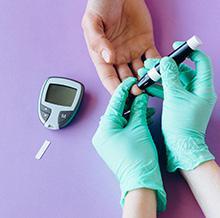


Partner Content: The Heart and Stroke Foundation
The global theme for 2025 is “Unmasking the appeal: exposing industry tactics on tobacco and nicotine products,” resonates with chilling urgency in South Africa. Amid a surge of tobacco and e-cigarette use driven by marketing tactics targeting youth, experts and advocacy groups are calling for decisive action.
A new national survey conducted for the African Centre for Tobacco Industry Monitoring and Policy Research (ATIM) based at the University of Pretoria reveals that tobacco smoking in South Africa has hit a high of 33.9% or 14.9 million people, a prevalence level last seen in 1993. Use of novel tobacco products like e-cigarettes, heated tobacco products (HTPs), and oral nicotine pouches among young people aged 16-34 has risen to 13.5% or 2.6 million young people.
"Tobacco and novel product trends are going up in parallel, indicating that people are not switching. We are simply adding harm," warns Professor Lekan Ayo-Yusuf, Head of the School of Health Systems and Public Health at the University of Pretoria and Director of ATIM. “We must take urgent action to turn this around.”
United as Protect Our Next, health and community NPOs amplify awareness of the industry’s deceitful tactics and rally support for stricter control measures. This May, Protect our Next has put the tobacco industry on ‘trial’, setting up mock crime scenes in public spaces to expose how Big Tobacco is targeting teens. Communities and schools
are invited to "lay a charge" against Big Tobacco, adding their stories, testimonies, and evidence to make the case for urgent regulation.
Lesego Mateme of the South African Tobacco-Free Youth Forum (SATFYF) highlights how the tobacco industry employs aggressive and calculated strategies to appeal directly to young people. “Flavoured products disguise the harshness of nicotine and tobacco, making them enticing to rst-time users. The sleek and concealable designs of devices like e-cigarettes make these products easy for kids to hide from parents and teachers. Marketing campaigns are clearly designed to resonate with young audiences.”
“Misleading messaging promotes e-cigarettes and similar products as "safer" alternatives, fostering a deceptive sense of security,” he continues. “Social media and in u-
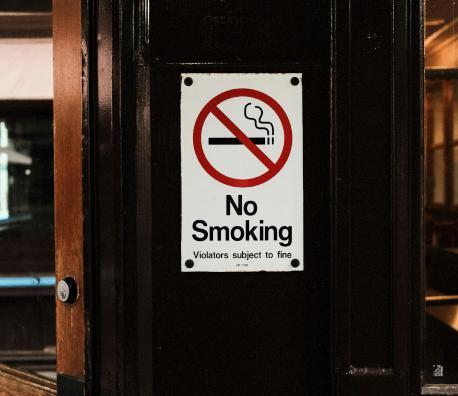
encers are leveraged to glamourise their products, while point-of-sale (POS) advertising ensures that these products are prominently displayed in convenience stores near schools.”
Recent research shines a harsh spotlight on how the tobacco industry courts the youth market in South Africa. The Big Tobacco, Tiny Targets study (2023) conducted by SATFYF revealed a deliberate strategy to embed tobacco products near schools, where 68.2% of point-of-sale (POS) locations displayed products at child eye level and over half placed them near sweets or snacks. 66.5% of POS sold single cigarettes, making them more a ordable and accessible to youth, while almost 70% of these outlets sold avoured cigarettes designed to lure young rst-time users.
Continued on page 10


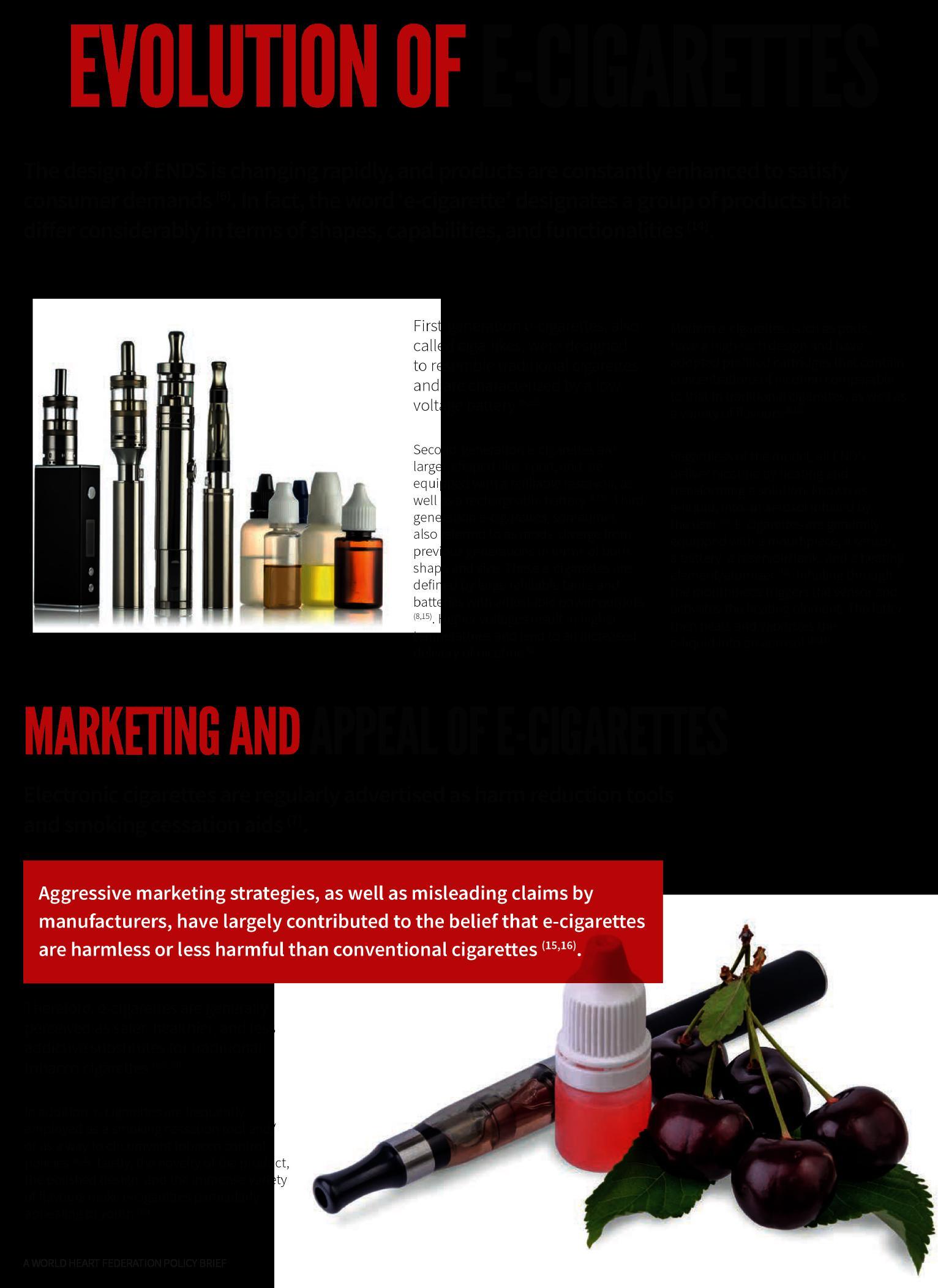

Similarly, the SAMRC National University Students Study found that 76.4% of university students reported exposure to e-cigarette advertisements, with promotions such as free samples and discounts amplifying use. Students exposed to e-cigarette or hookah marketing were twice as likely to use these products, and exposure to promotions increased the likelihood fourfold.
"The tobacco industry is relentless," says Professor Catherine Egbe, Senior Specialist Scientist in the Mental Health, Alcohol, Substance Use and Tobacco Research Unit (MASTRU) at the South African Medical Research Council (SAMRC). "From exploiting online platforms to ensuring easy access, it uses every avenue and deliberate tactics to normalise addiction under the guise of trendy, avoured products targrted at young people."
The human toll
Decades of research validate the devastating harm of tobacco use, compounded today by new nicotine products. "Nicotine can disrupt brain development in adolescents and deepens addiction," says Prof Egbe. "Far from o ering harm reduction, these products intensify risk through dual use alongside traditional cigarettes, and are more like harm re-introduction. Several studies have shown that e-cigarettes are a gateway to smoking traditional cigarettes, thus perpetuating nicotine addiction."
Professor Pamela Naidoo of the Heart and Stroke Foundation South Africa highlights that smoking signi cantly increases the risk of non-communicable diseases like heart disease and strokes, that are very preventable. "NCDs are preventable, so why increase your risks from a young age? Smoking accounts for nearly 50% of heart disease cases in South Africa. Vaping has also been linked to an increased risk of cardiovascular disease. Long-term vaping can damage blood vessels, raise blood pressure, and

increase heart rate, all of which contribute to heart disease and strokes."
"South African youth are under siege by an industry that puts pro ts ahead of lives. If we fail to intervene, the next generation will pay the price with their health," says Lorraine Govender, National Manager of Health Promotion at the Cancer Association of South Africa (CANSA). "We urgently need stronger tobacco control measures to ban child-friendly avours, restrict advertising, and enforce age veri cation. Education campaigns must expose the dangers of vaping, there should be better control of in uencer marketing on social platforms, and higher taxes should be imposed to discourage use. We must also provide accessible support for young people looking to quit."
The Tobacco Products and Electronic Delivery Systems Control Bill, currently in a Parliament o ers a blueprint for reform. Key provisions include 100% smoke-free indoor public places and certain outdoor places, prohibiting the sale of tobacco and vaping products to anyone under 18, mandating
standardised packaging with graphic health warnings on packages, extending the ban on tobacco advertising, promotion, and sponsorship to include e-cigarettes and hookah as well as POS advertising, and regulating electronic delivery systems like e-cigarettes (vapes) which are currently not regulated under the current law.
"This bill represents our chance to break cycles of addiction, disease and su ering,” says Prof Ayo-Yusuf. “Smoking-related illnesses claim about 40 000 South African lives annually and put enormous pressure on our public health system. South Africa must value the health of its citizens over corporate greed. It’s time to align with global best practices and protect public health."
"Every delay in passing this legislation means more lives put at risk," concludes Prof Egbe. "This year’s World No Tobacco Day must stand as a watershed moment for action in South Africa. Stakeholders are urged to rally behind legislative reforms, demand accountability from the tobacco industry, and safeguard the nation’s future from preventable harm.
There is no more time to lose “ “

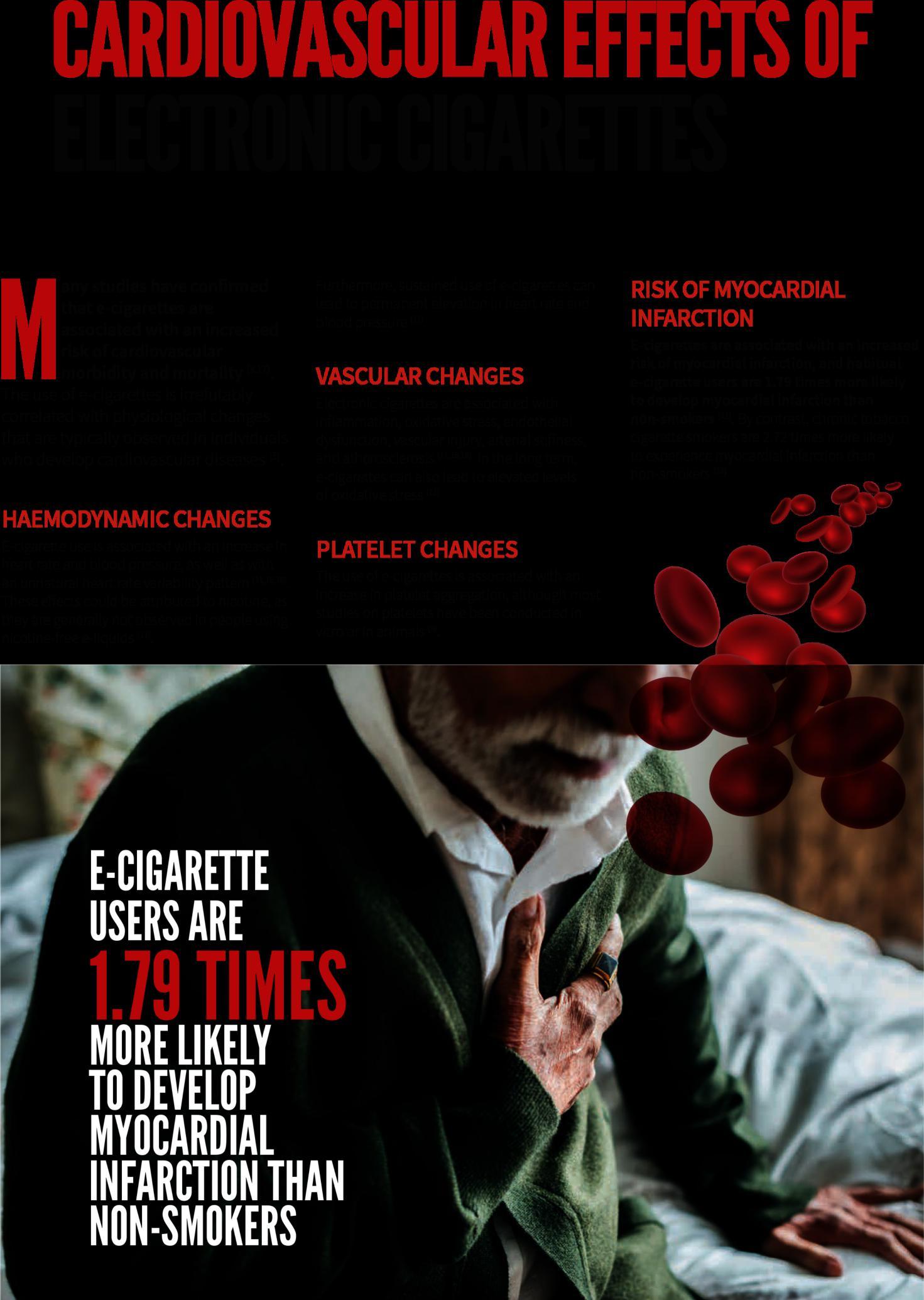


Content
Globally, one in every 100 children is diagnosed with autism spectrum disorder (ASD). In the United States, however, this gure has risen sharply to one in 31, with boys more likely to be diagnosed than girls – a pattern that hold true for South Africa as well.
Despite its growing prevalence, Dr Birgit Schlegel, a Paediatric Neurologist at Mediclinic Constantiaberg, says that autism remains widely misunderstood. “There are many misconceptions, often based on the notion that all autistic people are all the same. For instance, that autistic people can't feel emotions and never talk.”
Yet the most widespread deceptive myth, according to Dr Schlegel, is that autism can be cured. “Autism is not a disease caused by a virus or bacteria, or something that can be ‘caught’,” she explains. “We understand it to be the result of a mix of genetic and possibly environmental in uences that a ect early brain development. While many people with autism can often show a marked improvement in some symptoms, there is no cure as such.”
Autism is a neurodevelopmental disorder characterised by challenges in social communication and interaction, as well as restricted and repetitive behaviours. Some individuals may also be highly sensitive to everyday sensory experiences – such as loud noises, bright lights, certain textures or strong smells – which can feel overwhelm-
ing or even painful. They may also struggle with communication, both in speaking and in understanding body language, facial expressions or tone of voice.
As Dr Schlegel points out, the term “spectrum” in ASD refers to the wide range of symptoms and also the wide range of severity. “While earlier diagnostic frameworks distinguished between separate types of autism, the disorder is now classi ed based on severity and, more importantly, on the level of support required.”
In this sense, e ective treatment for autism depends on a highly individualised approach. “No two individuals with autism will have exactly the same needs,” Dr Schlegel explains. “The most e ective interventions combine behavioural, developmental, educational and psychosocial elements – often alongside speech and occupational therapy to help with communication and daily living skills.”
Although autism can be reliably diagnosed by age two, in practice, Dr Schlegel says most children are only diagnosed around the age of ve – and some not until adolescence or adulthood. “Later diagnosis often means the individual has lived for years with emotional, behavioural and social di culties that were not properly understood or supported.”
In South Africa, early screening opportuni-
ties do exist. “The Road to Health booklet given to every child at birth helps track developmental milestones up to age ve,” she says. “Children who do not respond to social cues, fail to make eye contact, or have delayed speech should be assessed without delay.”
Screening tools such as the Autism Diagnostic Observation Schedule (ADOS) – used by specially trained professionals – can help assess how a child communicates, interacts and behaves in di erent situations. These tools give families clearer answers and help guide the next steps in support.
Even based on the likely conservative estimate of 1% of the population being a ected, hundreds of thousands of people in South Africa are likely living with autism –many of them undiagnosed, due to limited resources, stigma or lack of awareness. As prevalence rises worldwide, so too does the need for accessible screening, informed care, and support for families.
“We need broader awareness and earlier identi cation,” says Dr Schlegel. “When autism is recognised and supported early, children are better able to adapt and develop, and families are better equipped to meet their needs. But to do this well, we must understand the spectrum for what it is – a diverse and lifelong condition requiring compassion, expertise and personalised support.”

Supplied Content
Autism is most commonly identi ed in childhood, yet studies suggest that approximately one percent of adults are on the autism spectrum, often without realising it. Without a diagnosis, these adults might not be recognised as neurodiverse and may miss out on the support they need to reach their full potential.
“It’s important to understand that autism is not a disorder to be ‘ xed’, but rather it is a di erent way of thinking, feeling, and interacting with the world. A proper diagnosis is a tool that can empower adults to embrace their di erences and maximise their potential in every aspect of life,” says Dr Jeanri Combrinck, a psychiatrist who practises at Netcare Akeso Kenilworth.
“A diagnosis of autism in adulthood can be a turning point because many adults on the spectrum may have spent their lives feeling ‘di erent’ or struggling in ways that they couldn’t quite explain. Many individuals develop coping mechanisms over the years, masking their symptoms or compensating through learned behaviours, yet core challenges associated with social interaction, sensory sensitivity, and rigid thinking can remain.”
Awareness
“Creating awareness about adult autism spectrum disorder (ASD) is crucial for improving the lives of people who live with this neurodevelopmental condition, often in silence, without the appropriate support or recognition,” Dr Combrinck says.
“We refer to a spectrum, as autism encompasses such a wide range of manifestations in varying degrees from high-functioning individuals to those who require more extensive support. A person with autism experiences the world in a unique way that neurotypical individuals who lack awareness may not understand.”
Some examples of how adults with autism may perceive and navigate their environment di erently include:
Social interactions can be challenging, overwhelming or confusing:
While neurotypical individuals may intuitively understand social cues such as body language, tone of voice, or facial expres-
sions, individuals with autism often struggle with these subtle signals. As a result, they may have di culty initiating or maintaining conversations, understanding sarcasm or humour, or interpreting others' emotions.
Sensory sensitivities:
People on the autism spectrum often experience heightened or diminished sensitivity to sensory stimuli. Certain sounds, lights, textures, or smells that others might not notice can be overwhelming or even painful for someone with autism.
Rigid thinking and preference for routine and predictability:
Changes in plans or unexpected events can cause signi cant stress or anxiety, and this can a ect their ability to adapt to new situations, whether it's a change in work tasks or an unexpected social event.
Intense focus and interests:
Many individuals on the spectrum develop deep, speci c interests in certain topics or activities. “This intense focus can be a strength, but it may also lead to di culties when these interests take precedence over other areas of life, or when others misunderstand them,” Dr Combrinck says.
Adults on the spectrum are more at risk for
mental health co-morbidities, which may exacerbate the challenges faced by those with autism, as well as complicate the accurate diagnosis of adult ASD.
“Studies suggest that up to 40-50% of adults with autism experience some form of anxiety, including generalised anxiety disorder, social anxiety or speci c phobias. Depression is unfortunately also common, with the chronic social di culties, isolation, and emotional dysregulation associated with autism can contribute to feelings of sadness, hopelessness, and withdrawal,” Dr Combrinck says.
Many adults on the spectrum also show symptoms of Attention-De cit/Hyperactivity Disorder (ADHD), such as inattention, impulsivity, and di culties with focus. At the same time, rigid thinking patterns may also overlap with obsessive-compulsive disorder (OCD) symptoms of the compulsions and rituals often seen in OCD, reinforcing the importance of specialist diagnosis and treatment. Identifying autism as the underlying condition can help clinicians target treatments more e ectively.
“A proper adult ASD diagnosis can provide several bene ts, including validation and understanding for adults and access to targeted support and resources, such as
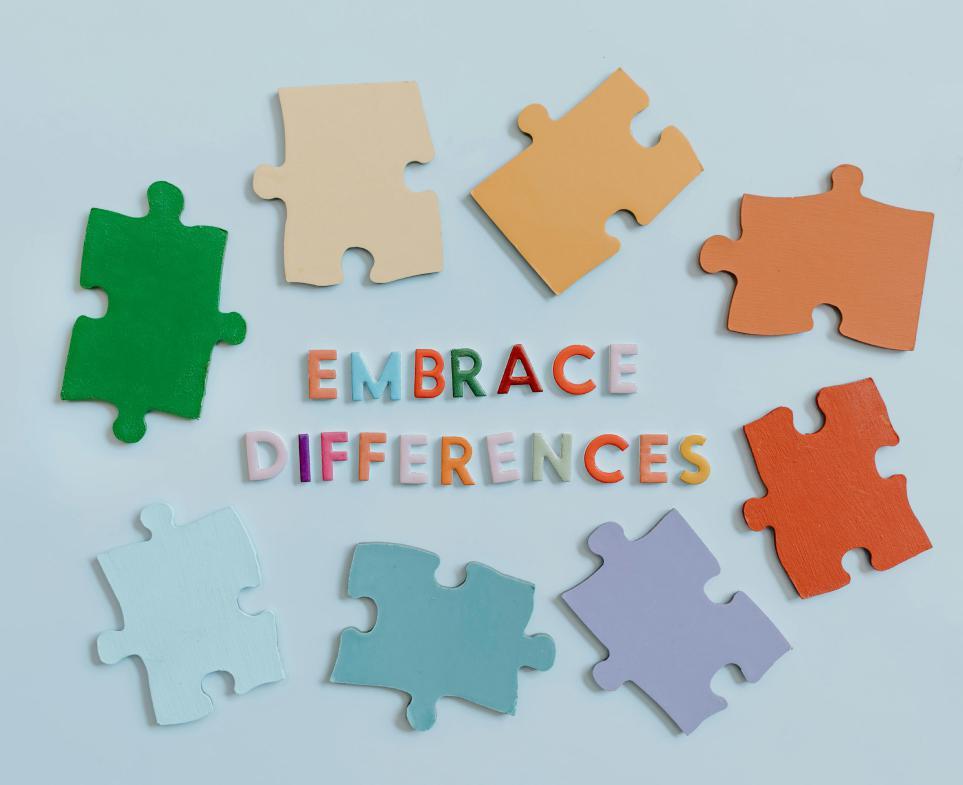

therapy, coaching, or workplace accommodations. This can make a huge di erence in reducing anxiety and increasing con dence for many people,” Dr Combrinck says.
“With a better understanding of their unique way of thinking and perceiving the world, neurodiverse individuals can learn strategies to improve relationships and communication with others, leading to healthier, more ful lling social lives.
“As a psychiatrist, I work with adults on the spectrum to help them develop coping strategies, improve their quality of life, and enhance their social and professional experiences. With the right support, individuals with autism can thrive, feel understood, and achieve their personal and professional goals.”
SIDEBAR 1: Tips for coping when feeling overwhelmed
“If you're on the autism spectrum, it is common to feel overwhelmed by sensory input, social situations, or unexpected changes,” Dr Combrinck says.
The following tips can be helpful in overwhelming moments:
Create a calm-down routine:
Having a set of calming activities you can turn to when things get too intense is incredibly helpful. Try listening to soothing music or retreating to a quiet, low-stimulation environment.
Deep breathing:
Deep breathing exercises can help activate your body’s natural relaxation response. Breathing in slowly through your nose for a
count of four, holding for four, and then exhaling slowly through your mouth for four can help slow your heart rate and bring calm.
Grounding techniques:
Shifting your attention to what you see, hear, or feel can help you regain focus.
Break tasks into smaller steps: This helps reduce the sense of being overwhelmed by allowing you to focus on one thing at a time.
Communicate your needs:
It’s important to express when you’re feeling overwhelmed. This might mean letting someone know if you need a break or some quiet time. It may help to have a pre-established non-verbal signal to let others know you need a moment.
Identify your triggers:
Understanding what causes you to feel overwhelmed can be the rst step in avoiding or managing those situations.
Set boundaries:
If you're in a social situation or at work and starting to feel overwhelmed, it's okay to set boundaries. This might mean stepping away from a conversation, asking for a change in the environment, or taking a break.
SIDEBAR 2: Building neurotypical support and understanding
“If you’re not on the autism spectrum, it can sometimes be challenging to understand what a neurodiverse person might be experiencing. However, there are simple ways to be more supportive and make life easier for someone with autism,” Dr Combrinck says.
Respect sensory needs:
Some individuals with autism might nd certain lights, sounds, or smells overwhelming. Be mindful of their sensory needs and try to create a more comfortable environment.
Be patient and give space when needed:
People with autism may need more time to process information or respond in conversations, so try not to rush them. Giving them space to gather their thoughts or feelings can reduce anxiety.
Be direct and clear in communication:
People with autism may have di culty interpreting indirect communication, such as sarcasm, body language, or social cues. Be clear and direct when talking to someone on the spectrum to avoid confusion.
Understand the need for routine:
Many individuals with autism thrive on routine and predictability. When plans change unexpectedly, it can be di cult for them to adapt. If changes are necessary, try to give advance notice and prepare them for the shift.
Avoid overloading with information:
Too much information at once can feel overwhelming for many people on the autism spectrum. Try to break things down into smaller pieces and present them one at a time.
O er empathy, not sympathy:
Sometimes, people with autism might face challenges that others might not understand, like social di culties or sensory overload. Rather than pitying them, try o ering empathy by acknowledging their experiences and validating their feelings.
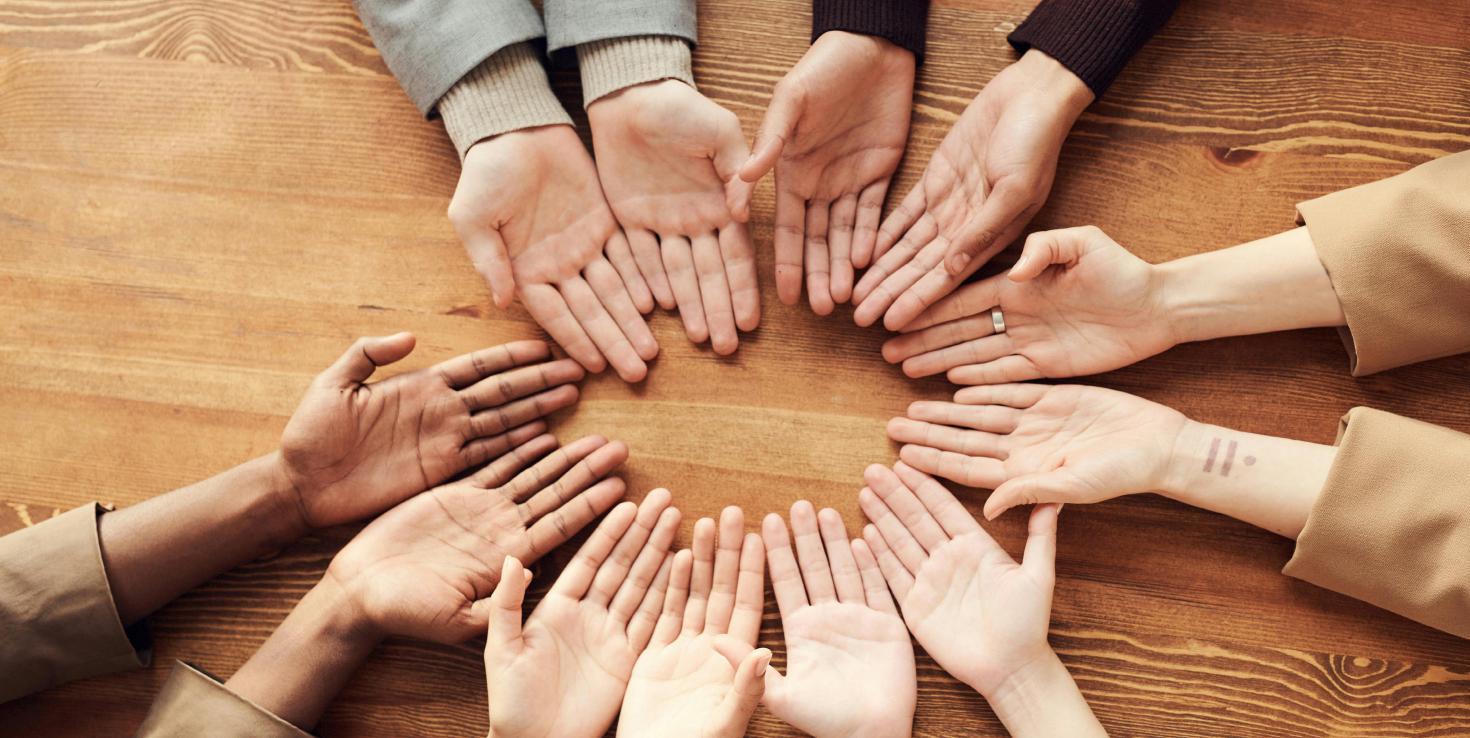

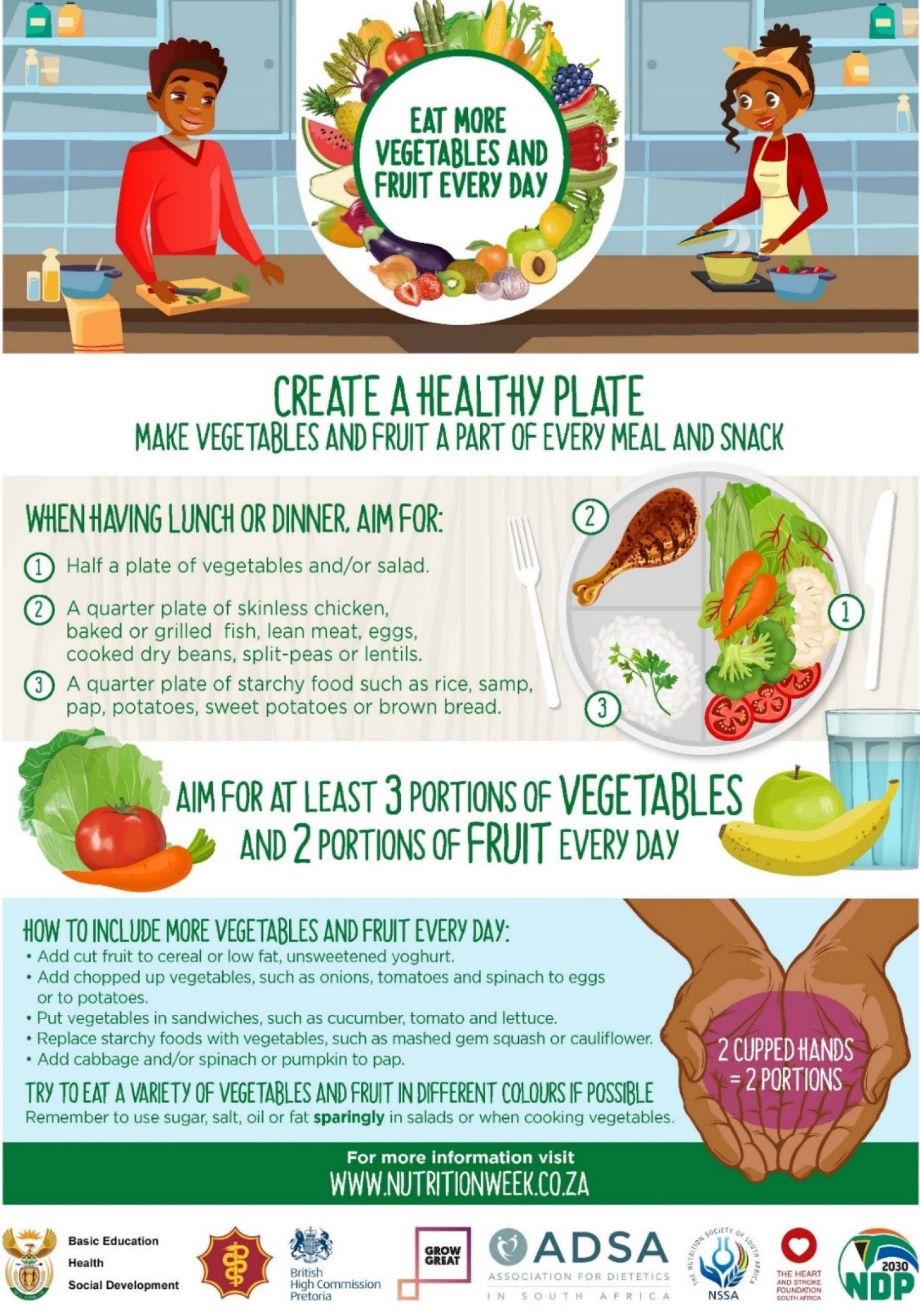

General Manager, Southern Africa Multi-Country Network at Roche Diagnostics
Every year, World Blood Donor Month honours the life-saving generosity of those who give blood and inspires blood drives that collect our valuable “elixir of life” at o ces, clinics, shopping centres, and more. Of course, this is a worthy initiative and cause, but we should be thinking about blood more than just one month a year.
While patients wait in maternity wards, trauma units or leukaemia clinics, the blood supply is limited. According to the World Health Organization, the median blood donation rate in high-income countries is 31.5 per 1,000 people. In low-income countries — many of which are across Africa — that number drops to just 5 per 1,000.
The disparity may mean that a woman who needs a transfusion after giving birth, an accident victim in the emergency room or a child facing surgery or blood loss, we may not be ready to save them in time.
Some countries are being proactive and demonstrating that blood can be delivered even to the most remote areas. In Rwanda, drone technology is delivering screened blood to rural areas, cutting delivery times from hours to minutes. South Africa’s SANBS also remains a global example in safety and e ciency. But these initiatives are exceptional and not necessarily the norm throughout our continent.
Additionally, behind the blood banks, diagnostics play a vital role. Blood must be screened for diseases such as HIV, Hepatitis B and C, Syphilis and other diseases before it can be used safely. So, screening tools, trained laboratory sta and modern infrastructure are the backbone of a safe donation system — and must be part of any national strategy.
The truth is, it’s not just donors that should prioritise the collection and delivery of safe blood, it’s policymakers, private-sector businesses and communities – that is, everyone. Each of us plays a role in mobilising those within our reach – creating awareness and considering the question, “What if I needed a blood transfusion?”
Human problems require human solutions. At the heart of Africa’s blood shortage is its people: donors, citizens, healthcare professionals, civil servants – you and me.
Donating blood takes less than an hour. It costs you nothing. And it can save up to three lives. Your donation could give a mother more time with her child, help a young person survive a car accident or give a child with leukaemia a fresh start in life. That’s the real power each of us holds — and the impact we can make.
World Blood Donor Month is a powerful call to action. In a world of rising need and diminishing funding from donors, community-driven solutions are more essential than

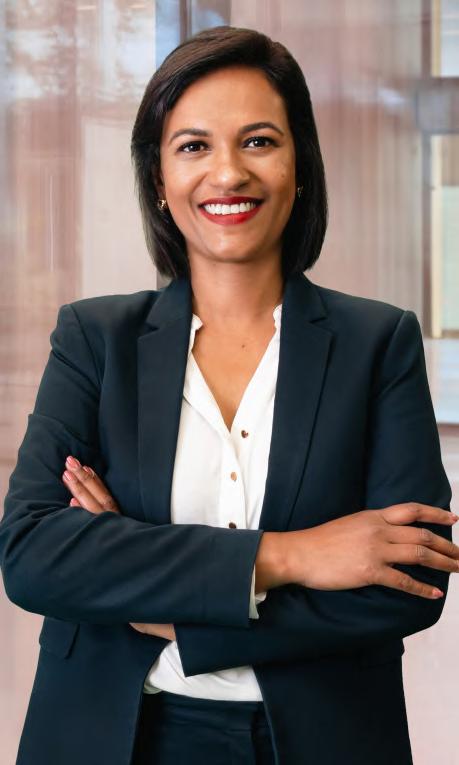
ever.
So, what can you do? Give blood. Encourage others. Support awareness drives.
Ask your local clinic how you can get involved in blood donation programmes.
Because behind every donation is a story — and behind every story is someone who lived to tell it.
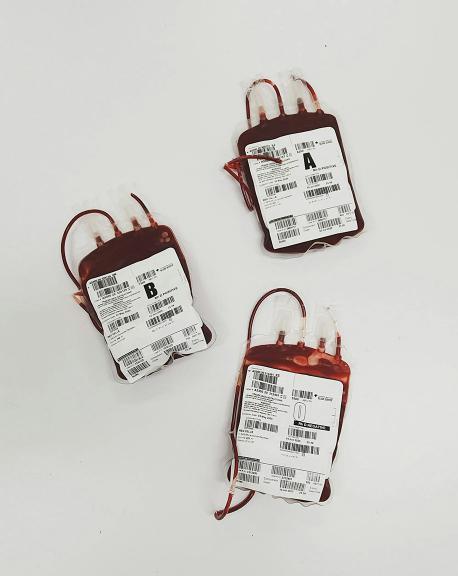

South African Bone Marrow Registry
The South African Bone Marrow Registry (SABMR) is urgently appealing to young men aged 16–35 to register as stem cell donors, as their critical underrepresentation is costing lives. Despite being the most e ective donors – o ering better transplant outcomes and fewer complications – young men make up only 8.9% of registered donors in the country, far below the global average of 39%.
This shortfall severely limits the chances of nding suitable matches for patients with life-threatening blood cancers, especially those from certain ethnic groups. With June marking Youth Month, the SABMR is calling on young men to step up and take action.
Jane Ward, Deputy Director for the SABMR says while they have seen a noticeable increase in the number of youth signing up to the registry, the number of young women registering far outweighs that of their male counterparts.
“Our donor recruitment teams have been speci cally targeting schools, universities and colleges over the last two years to spread awareness and sign up younger donors, but male representation is still lagging behind.”
Medical research has found that stem cell transplants from younger male donors lead to better patient outcomes, including higher survival rates and fewer complications post-transplant. Stem cell age, just like other organs, declines with age, therefore older donors do not yield as many stem cells as younger donors.
Ward explains. “Young male donors are less likely to trigger graft-versus-host disease (GvHD) a serious post-transplant complication. Additionally, male donors typically yield a higher volume of stem cells, enhancing the e ectiveness of transplants and likelihood of successful engraftment. We’ve also found that men have fewer pre-existing conditions versus women – leading to better donor eligibility.”
Donor Recruitment Supervisor for the SABMR, Gaelen Naidoo, says while the registry’s main focus is diversifying the donor pool by signing up as many stem cell donors to match the South African demographic, a bigger onus will be placed on recruiting younger males.

There is a shortage of young male stem cell donors in South Africa in the age
to 35, which signi cantly hampers the chances of nding suitable matches for patients. According to medical research, stem cell transplants from younger male donors lead to better patient outcomes and higher survival rates. The SABMR is calling on young men to take action and register this Youth Month.
“We will be shifting our focus towards more targeted recruitment e orts speci cally during Youth Month directed at young men. This month alone, the SABMR will be conducting seven donor recruitment drives at university campuses, high schools and local establishments that youth frequent in Cape Town, Free State, Johannesburg and Durban.
We invite young men to take action by joining recruitment drives or signing up online
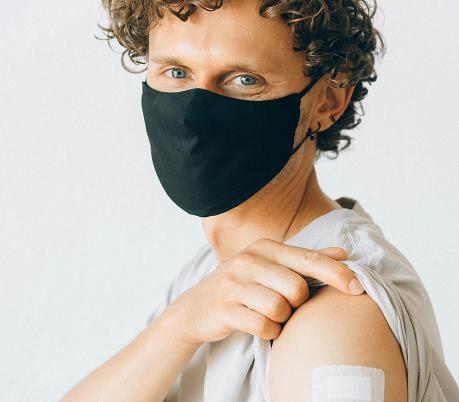
on our website from the comfort of their homes of o ces. Registering as a stem cell donor is absolutely free and all logistics with regards to issuing buccal swab kits and the couriering thereof is taken care of by the SABMR.”
If you’re between the ages of 16 and 45 and relatively healthy, you may be eligible to become a stem cell donor. To register and view the donor exclusion criteria, visit www.sabmr.co.za
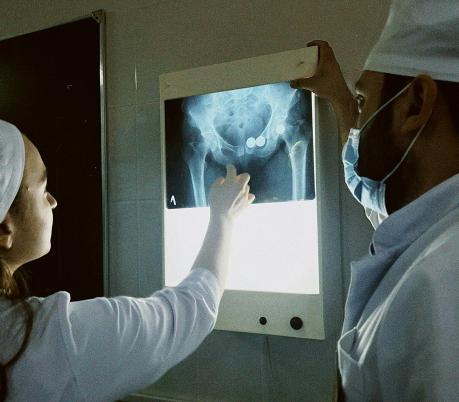

Tracey Catania
In a world that rewards busyness over stillness, The ORT Jet Business Show recently o ered a much needed pause for re ection in an insightful conversation between David Zidel and Ronen Aires. David, a nance expert and behavioural economics enthusiast, opened the discussion with a profound insight: “We’re not always in business, we’re in busy-ness.” This set the tone for a conversation that challenged the chaos of modern living and o ered tools for transformation.
Ronen, founder of Student Village and author of Breach, has worn many hats, entrepreneur, high-performance coach, mental wellness leader but at his core, he is a seeker. A seeker of stillness, purpose and truth. Drawing inspiration from Stephen Covey’s third habit, “Put rst things rst,” Ronen described the modern paradox: in our rush to respond, reply, and react, we lose sight of what’s actually important.
“We’re overstimulated,” he said plainly. “Emails, WhatsApps, news feeds, noti cations, they’ve hijacked our nervous systems.” It’s not just inconvenient it’s making us sick. Burnout, anxiety, disconnection are not fringe issues anymore, they’re becoming the norm. Ronen believes that the root of this lies in our addiction to speed, stress and constant noise.
One of the most unconventional and e ective tools Ronen uses to help clients reconnect with themselves is cold exposure therapy. “Our fear of the cold comes from our bobbas,” he laughed. But he’s serious about its power. Whether it’s plunging your face into a bowl of ice, ending a shower on cold, or simply immersing in cold water a few times a week, the results are astonishing. “Just 11 minutes a week,” he shared, “can

shift your state, stimulate your parasympathetic nervous system, and clear your mind like a freshly wiped windscreen.” The discomfort becomes a gateway to mental clarity.
Leadership, Ronen explained, is especially lonely. The weight of decisions, the pressure to perform, the expectations, can be crushing. That’s why he insists on the healing power of stillness. “If you’re too busy for 20 minutes in nature a day, then spend an hour,” he quipped.
Stillness, breathwork and time outdoors help regulate the nervous system and remind leaders of what truly matters.
Stress, he noted, is like a bag of crisps, we know it’s bad for us, but we keep reaching in. Breaking the cycle means starting small. One surprisingly impactful tip? “Turn your phone back to 2016,” Ronen said. “Turn o noti cations. Reduce the noise.” Hyper-connectivity, he warns, is not only addictive it’s eroding our ability to connect with our families and ourselves.
He nds deep wisdom in ancient traditions too. “Shabbat is a sacred pause,” he said. “It’s when we reconnect with the voice inside.” This is especially vital for children growing up in a digital world. Ronen and David explored how behavioural economics can help shape environments that make wellbeing the default. Simple nudges like silencing phones, creating screen-free zones, and prioritising real connection.
When David asked how to rediscover purpose in this chaos, Ronen replied with two words: “Know thyself.” Purpose, he believes, isn’t xed. We have many throughout our lives. But in the whirlwind of busyness, we often lose touch with them. His

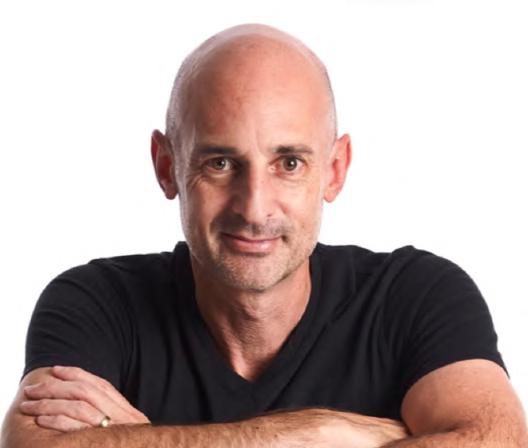
guiding question? “What impact do I have on others?” That, he believes, is the truest measure of purpose.
Then came the concept of Chooseday. Born out of personal burnout and the urge to reframe time, Ronen transformed Tuesdays into a day of intentional living. “I was doing things that didn’t bring me joy,” he explained. “So I started Chooseday, a day to go at my own pace, be creative, connect with people, and do what fuels me.” Over six months, the impact was so tangible that others began to notice a profound shift in him. “On a Chooseday,” he said, “I am always choosing.”
He o ered simple, grounding tools for others to try:
Before bed, sit outside in the dark, breathe deeply, and listen to music.
Use cold, heat, and breathwork like saunas or ice baths to shift states and reset.
Allow state changes to be uid don’t over-schedule your recovery.
Create space daily to re ect, disconnect, and recalibrate.
These practices, he explained, aren’t just about feeling better they reduce risks of chronic disease by up to 40%. “The pain of my past wounds,” Ronen shared candidly, “has become the secret to my success.” For him, healing and high performance are inseparable. When we heal, we lead better. We live better. We love better. If we choose to pause, breathe and reclaim our days even just one Chooseday at a time, we might just remember who we really are.

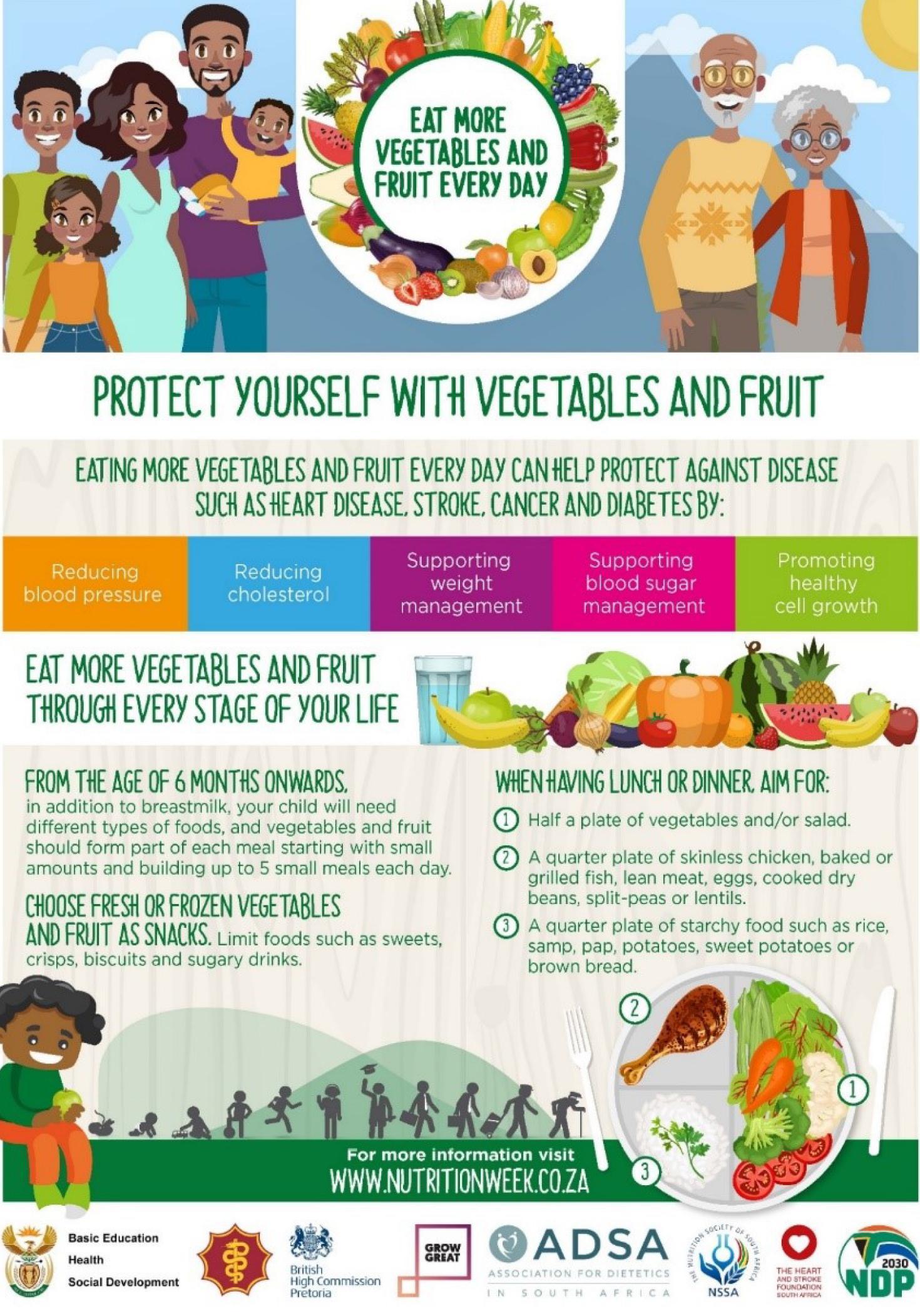


Supplied Content
South Africa's hospitality industry, projected to be worth more than R20 billion in 2025, is experiencing a wellness revolution. Known for its high-pressure environments and long hours, forward-thinking hospitality leaders are discovering that investing in sta mental health is a powerful business strategy that blends ethics and practicality.
While global reports show 60% of hospitality sta experienced mental health challenges in the past year and 76% have faced issues during their careers, progressive hotel chains like Dream Hotels are turning these statistics into opportunities for meaningful change.
The demanding nature of hospitality work, with long hours, diverse guest interactions and dynamic environments, is being reframed as a unique growth opportunity. The constant interaction with people from di erent backgrounds, problem-solving under pressure and adapting to change can build emotional resilience, strengthen communication skills and foster deep empathy. All sta need is the right support.
"This is one of the most dynamic and rewarding industries in the world. We're creating life-changing experiences that people hopefully never forget. When we support our teams properly, we unlock incredible potential through genuine care and strategic support," explains Nick Dickson, group custodian at Dream Hotels and Resorts.
Dickson advocates normalising mental health conversations within hospitality spaces. "We're talking openly, listening actively and backing our words with meaningful action. This reduces stigma while showing our teams what genuine support looks like,” he says.
Industry leaders are implementing comprehensive wellness strategies with impressive results. Companies are prioritising employee wellbeing through Employee Assistance Programmes (EAPs), exible work hours and regular mental health check-ins. According to the World Health Organisation, these support structures signi cantly improve retention and service quality.
Progressive businesses are training sta to recognise signs of mental distress in themselves and colleagues.Mental Health UK research shows early intervention dramatically improves outcomes while building cultures of empathy and mutual support. Dream Hotels is creating inclusive, psychologically safe environments by training sta to respect cultural di erences and respond sensitively to various situations. The UNWTO's 2021 report highlights how psychological safety enhances both guest satisfaction and company reputation.
Smart hospitality companies are also partnering with local therapists, psychologists and wellness coaches. Research from the Journal of Travel Researchdemonstrates that
professional mental health support is crucial in tourism settings, where people may be far from usual support systems.
Working in tourism can be demanding but with proper support, these challenges become powerful catalysts for growth. High-pressure moments transform into opportunities to develop resilience, connect meaningfully with others and take genuine pride in creating unforgettable experiences.
Industry experts agree that change starts with leadership commitment – from scheduling exibility and shift-swapping autonomy to leaders sharing their own wellness journeys. Creating systems for regular breaks, mental health days and on-site support services proves essential for sustainable success.
Companies prioritising mental wellness are building more resilient, pro table and sustainable businesses. When hospitality workers feel genuinely supported, their enhanced wellbeing translates directly into exceptional guest experiences and stronger performance.
The industry built on care is nally learning to care for its caregivers and everyone benets. Because authentic smiles at check-in come from teams who feel genuinely supported and empowered to thrive.



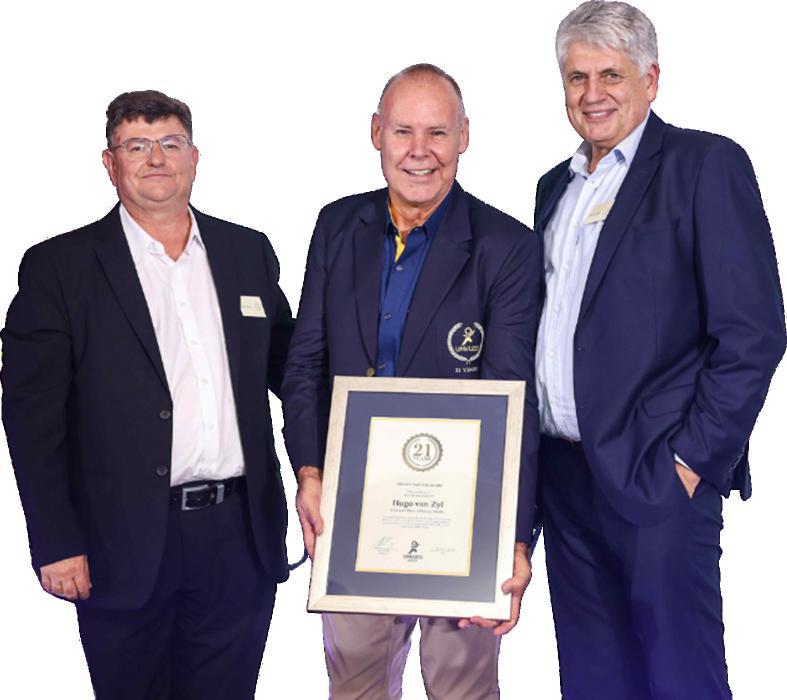
Supplied Content
When Umvuzo Health entered the medical scheme market in 2004, it had no capital reserves, no broker support and no track record. What it did have was a clear mission: provide a ordable, accessible healthcare to South Africans excluded from the private healthcare system. Twenty-one years later, the Scheme covers nearly 100 000 lives, is fully self-administered, and remains nancially sound with a solvency of over 50%.
Founded to serve the needs of lower-income workers, Umvuzo Health didn’t follow the rules set by incumbents. Instead, it created its own, focusing on people who had been overlooked and designing bene ts that made nancial sense for them and their employers.
“We were written o before we even began,” says Jan Joubert, co-founder of Umvuzo Health. “We operated on a cash basis in the early years. Claims were paid only when premiums were received. It was tough, but it worked because the need was undeniable.”
Challenging the Status Quo: A Model That Works for the Workforce
While traditional medical schemes catered largely to management and white-collar
employees, Umvuzo targeted the workforce that keeps South Africa’s industrial engine running: mineworkers, manufacturing sta and retail employees.
Early partnerships with employer groups like Harmony Gold, Clover SA and Booysens Bore gave the Scheme its initial traction. Organised labour also backed Umvuzo, recognising its commitment to health equity across employee levels.
“Health isn’t a management bene t,” says Heinrich Rix, CEO of the Rx Group of Companies and co-founder of Umvuzo Health. “It’s a basic need. Our model gives the same cover and service quality to everyone, from executives to entry-level workers. That fairness resonates with employers who value workforce well-being and want budget certainty without compromise.”
The Scheme’s governance structure reinforces that commitment. Its Board of Trustees, elected by the members, provides strategic oversight and ensures the Scheme remains accountable and member-focused. Self-Administered. Data-Driven. Built for Value
Unlike most Schemes that outsource critical functions, Umvuzo Health is fully self-administered. It manages everything from mem-
bership and contributions administration to claims and client services, with support from the Rx Group. This internal control allows it to contain costs while delivering strong bene ts.
For 2025, Umvuzo has enhanced all options across the board, including:
* Unlimited prescribed basic acute medication
* Unlimited digital GP and nurse consultations
* Unlimited basic pathology and radiology
* Expanded mental health and preventative care access
These improvements reinforce Umvuzo’s strategy to o er practical, accessible healthcare that meets the real-world needs of working South Africans.
From Sick Care to Smart Prevention
With rising chronic disease rates and pressure on both public and private healthcare, Umvuzo Health is shifting focus from treatment to prevention. At the centre of this shift is Healthy Me, a data-powered health platform launched as part of the Activator Option and funded entirely by the Scheme. The programme provides members with personalised health insights drawn from a
Continued on page 22

wide range of inputs:
* SAM, a clinical-grade wearable, tracks real-time biometrics including heart rate, blood pressure and activity levels
* Intelligene conducts DNA testing to inform risk pro ling and medication compatibility
* Enbiosis SA delivers gut microbiome analysis, o ering targeted nutritional and probiotic advice
All data is integrated through a secure 360 Platform co-developed with MIP, giving members and care teams a full clinical view. Arti cial intelligence interprets the inputs, identifying early risks and guiding timely interventions.
“This is not theory. It’s already delivering results,” says Rix. “Healthy Me is more than a programme, it’s a shift in mindset. We’re using data, science, and technology to keep our members healthier for longer. It’s not about waiting for illness to strike, but about spotting risks early and acting fast. This is the
future of healthcare, and it’s already changing lives. We’re proving that personalised, predictive care isn’t a luxury, it’s a necessity.” Umvuzo is the rst South African medical scheme to embed this level of personalised, predictive care into a standard medical plan bene t. It is healthcare that anticipates rather than reacts.
The Case for Corporate Healthcare Reform As in ation outpaces salary growth, employers face a growing challenge: how to o er meaningful healthcare bene ts without blowing budgets. Umvuzo’s model is built for this moment.
“The public system is overstretched, and the private sector’s in ation model is unsustainable,” says Rix. “We o er a pragmatic alternative. One that keeps people healthy and productive without overburdening the system.”
With National Health Insurance still a moving target, Umvuzo believes corporate schemes have a role to play in a more inte-
grated national health system. “We know how to serve rst-time healthcare users. We understand the behavioural and cultural nuances, and we know how to deliver results on a tight budget,” says Rix. “That kind of knowledge has national value and we’re ready to contribute.”
Looking ahead, Umvuzo’s vision is clear. It aims to be a responsive, digitally enabled health partner. By combining data, technology and human insight, the Scheme is positioning itself to support longer, healthier lives while staying nancially sustainable.
“We’re building a healthcare ecosystem that works,” says Hugo Van Zyl, Principal O cer of Umvuzo Health. “Our members trust us. Employers rely on us. And we’re just getting started.”
For more information:
visit https://umvuzohealth.co.za/, email info@umvuzohealth.co.za or call 0861 083 084.
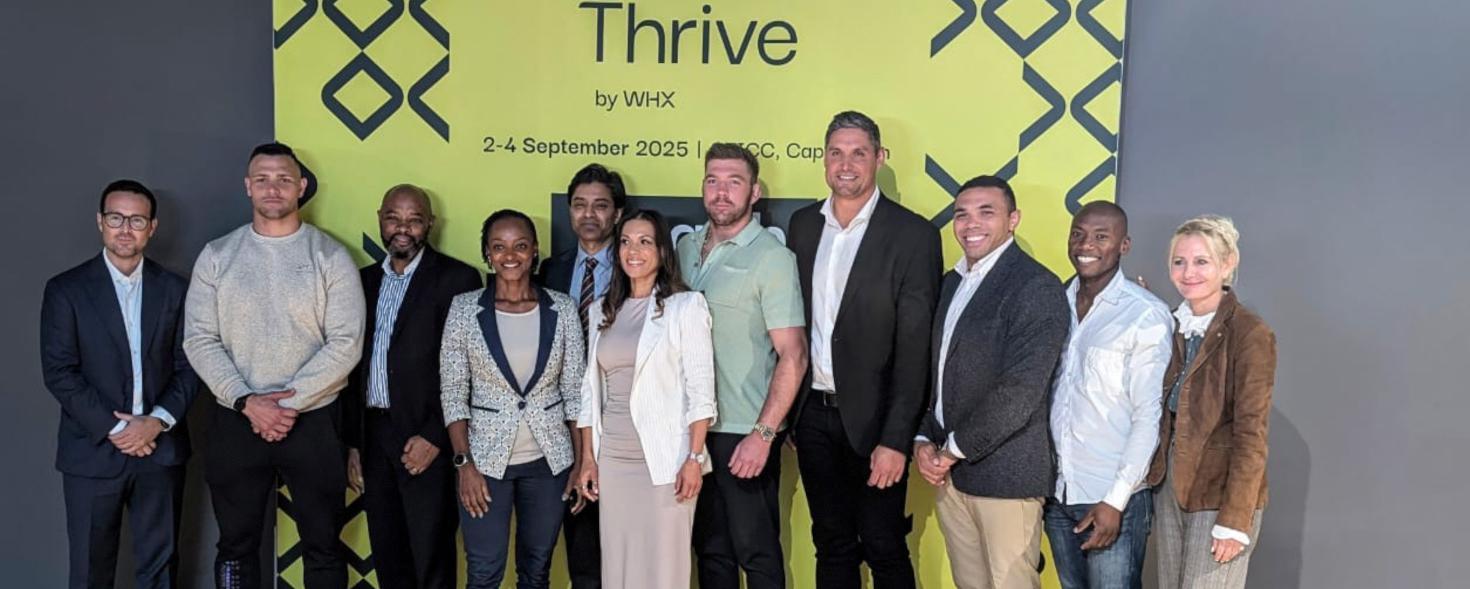
Africa’s wellness tourism market is estimated at $94.04 billion in 2025, and is expected to reach $120.02 billion by 2030, at a CAGR of greater than 5%[1], with a growing global interest in holistic well-being and increasing investments in luxury wellness infrastructure.
for the sports and wellness sector, is a bold new addition to the World Health Expo Cape Town, set to take place from 2 - 4 September 2025.
With over 200 participating companies and supported by 100+ global speakers, Thrive by WHX promises an experiential event of tness, longevity, wellness and real-world
health to support the way we live now. In South Africa, the Western Cape leads health and wellness tourism, with 45.2% of visitors[2] actively taking part in wellness activities during their stay. Cape Town has been recognised as the ttest city in South
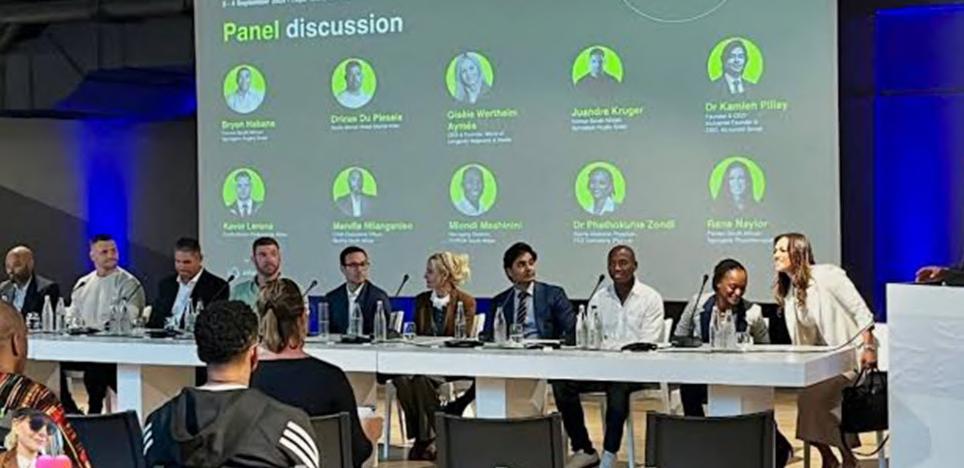
Africa for three consecutive years, with its residents logging the highest levels of gym visits and steps, according to Discovery Vitality data, and outdoor activities consistently rank among the top ve things to do in Cape Town.
The inaugural Thrive by WHX, taking place from 2- 4 September 2025 at the Cape Town International Convention Centre, will feature the ultimate blend of tness, fun and community as the full spectrum of the tness and wellness ecosystem comes together, providing sports fans, industry leaders, sports in uencers, over 200+ brands and business owners with a space to meet, share and grow.
“In Cape Town, the passion for sport, wellness and longevity is very apparent. This, along with the warm reception from the local government, made Cape Town an easy choice for the launch of our rst sports, wellness and longevity event Africa - Thrive by WHX 2025. I’d like to see local exhibitors from the health, wellness and sports sector in Cape Town forming the foundation for Thrive by WHX and have no doubt that this will become a global event over time,” explains Tom Coleman, Portfolio Director for Informa Markets.
Thrive by WHX is powered by World Health Expo (WHX), the largest global network of healthcare events. With a proven track record of uniting clinical, digital and wellness communities worldwide, Thrive by WHX is WHX’s bold new step into personal health and consumer wellbeing, co-located with World Health Expo Cape Town.
“This expo ts nicely with the global and indeed local trend of individuals taking personal responsibility for their health. Some of the themes you can expect will be around longevity, digital health - the future of it and collaboration. We’ll be working closely with schools and universities to really attract the youth of Cape Town to this event so that we can start changing the narrative around what support means during a sporting career,” notes Coleman. Whether a weekend outdoor warrior or a seasoned pro, attendees will experience three dynamic
days of expert-led workshops on policy, digital health, nutrition, longevity and sports, energising activities, exclusive meet-and-greets with athletes, sports in uencers and local legends, as well as access to the latest innovations in tness, wellness and tech.
“It’s great to see lots of people moving and exercising - the general public as well as professional athletes - and I’ve noticed how hungry people are for the right knowledge to understand how their bodies work. This event is one not to miss as it’ll o er the general public access to what elite athletes take for granted - the collaborative knowledge provided by nutritionists, physios, chiropractors, psychologists and more,” remarks Rene Naylor, former SA Springbok physiotherapist.
Attendees can expect to see some huge global athletes and leading names participating from the health , tness and the wellness world, as well as range of sports in uencers, including Bryan Habana and Juandré Kruger (former SA Rugby Springboks), Dr Kamlen Pillay (founder and CEO of InUversal Group), Mandla Ntlanganiso (CEO, SA Boxing Association), Mlondi Mashinini (Managing Director, HYROX), Dricus du Plessis (SA Mixed Martial Arts (MMA) champion), Kevin Lerena (SA professional boxer), Gisèle Wertheim Aymés (Founder of Longevity), Dr Phathokuhle Zondi (sports medicine physician) and Rene Naylor, former Springbok

Physiotherapist, as well as Ant Middleton, one of the many keynote speakers at WHX Thrive this year.
High impact workouts, recovery zones and immersive wellness experiences will make up some of the activities in the action-packed three days - all designed to inspire, energize and support attendees to thrive at every stage of life. Thrive by WHX will unite a vibrant community of passionate individuals, thought leaders, innovators shaping the future of sports, wellbeing and longevity.
“Thrive is not just a typical conference, it’s an immersive experience where we invite parents and the youth to join the conversation along with athletes, coaches, scientists as well as the latest equipment and latest digital technology in a collaborative space to change and shift the way we curate the sporting environment,” adds Dr Phathokuhle Zondi, sports medicine physician.
There’s something to challenge and inspire everyone, whether you’re building strength, testing endurance, or learning new techniques. Discover the newest launches, meet the brands behind them, and access exclusive o ers available only at WHX Thrive. Attendees can also join live tness classes, obstacle courses, team events, and even performance workshops.
“I encourage visitors to come and experience the phenomenal Thrive event in Cape Town, voted by Time Out Magazine as one of the best cities in the world, a city that encourages wellbeing, being outdoors in nature and longevity,” adds Bryan Habana, former SA Rugby Springbok.
Whether you're a healthcare leader, wellness advocate, sports medicine expert, or championing healthier communities—Thrive by WHX is your platform to drive impact, innovation, and a culture of well-being across Africa.
To nd out more and register for Thrive by WHX, visit: https://www.worldhealthexpo.com/events/thrive/capetown/en/home.html


